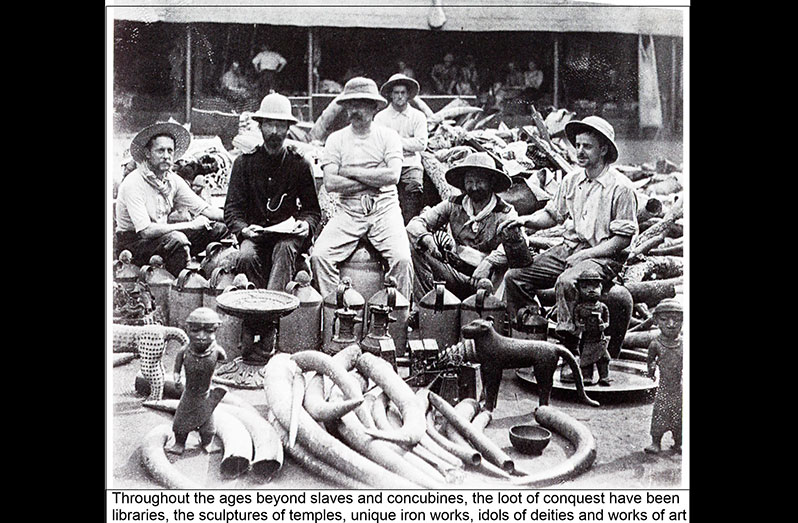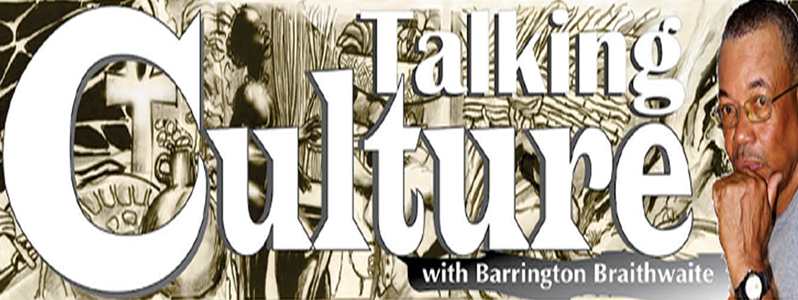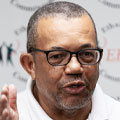WITHOUT evidence of cultural memory and a creative relationship with the spaces we occupy, then we just drift through and are overcome with insignificance with the swift dance of time. In saying that, what then is profound and what is not? What comprises the legacy of nations through its works to the admiration of friend and foe alike? Let’s take Russia as an example: what do we know at a first glance of Russia? Is it of Catherine the Great and her exorbitance in comparison to the compositions of Tchaikovsky and the poetry of Alexander Pushkin? The answer is the latter two, in Russia and also abroad. Likewise, with the savagery of Rome, had they not through the inspiration of Greece and by that the very Cartage they destroyed, and the currents of inspiration that imbued the connected spaces of the ancient world of Africa and the Mediterranean, KHEMET; rendering in our minds the architecture of Rome that we justifiably admire, the sculpture and metal works that cloud our memory, instead of the bloodthirstiness of Rome- definitely Rome with its laws and inclusive colonising systems would be lost to our interests, as another global menace, gladly like the Assyrians, gone. The arts indeed have not always been used positively, the martial melody of the Horst Wessel-Lied did with a doctrine of racial mythology fitting the era, led the Nazis across Europe through WWII, but it was the music and captured imagination of Richard Wagner’s God-men of Valhalla that fueled that mythology into a functional mass human-weapon. But even in battle, music has found its way to admiration, the Zulus sang three songs in battle, the first is one of aggressiveness against an unrighteous enemy, the second is a song of regret ‘that brave men on both sides must die’ the third ‘honours the brave who have died’ this trio of songs were used in the film ‘Zulu’ a very popular movie of the ’70s, saw it a few times.
 I have lobbied across opposing governments as an artist and writer that culture and matters of the national heritage should have their own domain, in that related context, to get the best, the same is required of Youth and Sports. There was a reason why drama, sculpture, paintings and frescoes were so popular in the world ages before photography. All the chronicles we owe to our human ancestors of past eras are due to the arts. Of course, through them, we inherit the propaganda and embellishments that pleased even cowardly kings, scheming Princes and half-mad prophets. Still, modern disciplines like archaeology are clarifying ancient royal inspired-artistic misdemeanours. We in the arts in Guyana must construct the platform to tell the story of our Guyana, the precedents of what our peers have done in the Caribbean and across the Americas are inspiring. The world is continuing to change, the changes are not entirely in our interest, we don’t own the technology or the ‘missiles’ but the technology in our area, regardless of our limitations, can be utilised. The platform I’m talking about revolves around the business of the arts, and its rules and tireless work. Somehow the market of global humanity must be accessed, and since we speak a different language, that sometimes even our kindred spirits don’t quite understand, we have got to talk to ourselves first. To begin, we have to explore and explain the present dangers of this apparent easy option of copying verbatim subject matter from the internet. It appeals to our laziness, but it must be realised first that everything on the net belongs to somebody else. Some years ago there was an Amerindian art exhibition that donned the first page of the Sunday newspapers, I can’t remember which papers, but all of the pieces were taken from the internet-Instagram posts of a photographer on Pinterest. Neither the Newspapers nor the Toshao of the area could have identified the origins of the models. It would have been very embarrassing should the pieces be elevated to an exhibition that embodied national sensibilities. As I’ve often said, the arts, like any serious discipline, cannot be bluffed, you either know or you don’t.
I have lobbied across opposing governments as an artist and writer that culture and matters of the national heritage should have their own domain, in that related context, to get the best, the same is required of Youth and Sports. There was a reason why drama, sculpture, paintings and frescoes were so popular in the world ages before photography. All the chronicles we owe to our human ancestors of past eras are due to the arts. Of course, through them, we inherit the propaganda and embellishments that pleased even cowardly kings, scheming Princes and half-mad prophets. Still, modern disciplines like archaeology are clarifying ancient royal inspired-artistic misdemeanours. We in the arts in Guyana must construct the platform to tell the story of our Guyana, the precedents of what our peers have done in the Caribbean and across the Americas are inspiring. The world is continuing to change, the changes are not entirely in our interest, we don’t own the technology or the ‘missiles’ but the technology in our area, regardless of our limitations, can be utilised. The platform I’m talking about revolves around the business of the arts, and its rules and tireless work. Somehow the market of global humanity must be accessed, and since we speak a different language, that sometimes even our kindred spirits don’t quite understand, we have got to talk to ourselves first. To begin, we have to explore and explain the present dangers of this apparent easy option of copying verbatim subject matter from the internet. It appeals to our laziness, but it must be realised first that everything on the net belongs to somebody else. Some years ago there was an Amerindian art exhibition that donned the first page of the Sunday newspapers, I can’t remember which papers, but all of the pieces were taken from the internet-Instagram posts of a photographer on Pinterest. Neither the Newspapers nor the Toshao of the area could have identified the origins of the models. It would have been very embarrassing should the pieces be elevated to an exhibition that embodied national sensibilities. As I’ve often said, the arts, like any serious discipline, cannot be bluffed, you either know or you don’t.
Nation-building is a work of art. It isn’t surprising that all the revolutionary nations that rejected its previous horrid histories, well, the old folklore and age-old legends of its peasantry, are today coming to grips with the global appetite for diverse entertainment and are making efforts to tap into the market even reclaiming like the East Europeans did with the fall of the ‘Iron Curtain’ to own Vlad Dracula. As I emphasise, the work of art that constitutes nation-building cannot be attributed to the interpretation of foreigners or lazily adopted. It’s a difficult creative duty for beings and creatures of the soil.




.png)









